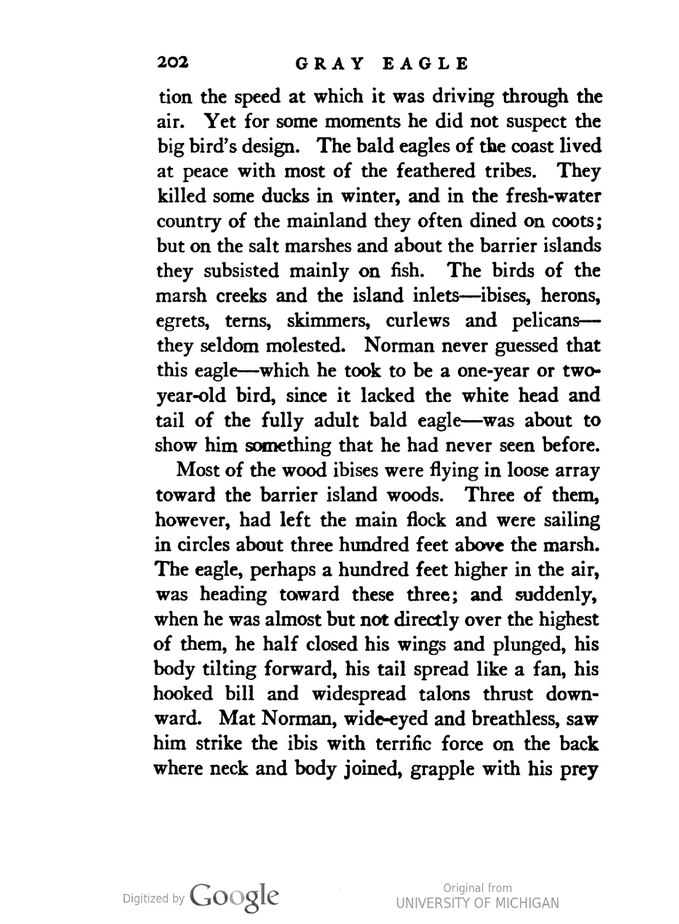tion the speed at which it was driving through the air. Yet for some moments he did not suspect the big bird's design. The bald eagles of the coast lived at peace with most of the feathered tribes. They killed some ducks in winter, and in the fresh-water country of the mainland they often dined on coots; but on the salt marshes and about the barrier islands they subsisted mainly on fish. The birds of the marsh creeks and the island inlets—ibises, herons, egrets, terns, skimmers, curlews and pelicans—they seldom molested. Norman never guessed that this eagle—which he took to be a one-year or two-year-old bird, since it lacked the white head and tail of the fully adult bald eagle—was about to show him something that he had never seen before.
Most of the wood ibises were flying in loose array toward the barrier island woods. Three of them, however, had left the main flock and were sailing in circles about three hundred feet above the marsh. The eagle, perhaps a hundred feet higher in the air, was heading toward these three; and suddenly, when he was almost but not directly over the highest of them, he half closed his wings and plunged, his body tilting forward, his tail spread like a fan, his hooked bill and widespread talons thrust downward. Mat Norman, wide-eyed and breathless, saw him strike the ibis with terrific force on the back where neck and body joined, grapple with his prey
